Football, oh, football. It’s a sport I thoroughly enjoy photographing, yet I could never imagine myself playing it. If you were with me on set, you would quickly discern, by the way I instinctively recoil when athletes leap towards me, that I was never cut out for the sport. Indeed, stepping into a photo shoot with a gymnastics crash pad and a bunch of guys hitting it hard enough to make the ground shake is always a highlight of my year.
Over time, not much has really changed in these photo shoots. Perhaps the athletes’ hairstyles have evolved, and certainly, the age gap between the photographer and the players has grown, but that’s about it. The key difference between when I started photographing campaigns like the Arizona State football campaign at age 19, and now, is a specific part of the jersey – the visor.
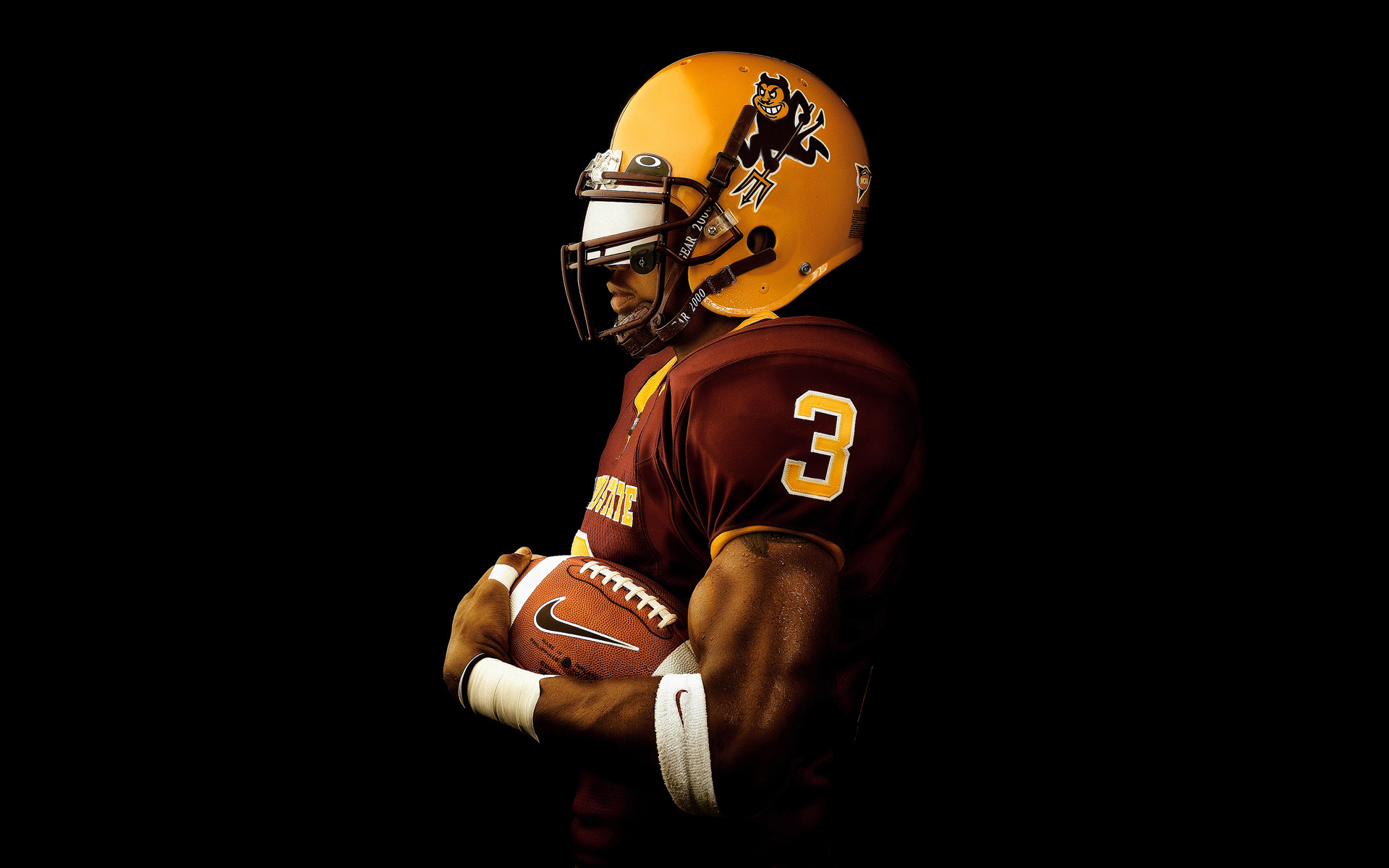
When I first photographed Rudy Burgess, sporting a black visor illuminated by a large softbox, it was a unique image, as not many players wore them on the field, since they required a doctor’s approval. Now, we’re witnessing a proliferation of visors in modern football uniforms. Their sharp edges and highly reflective colored tint lend a futuristic feel to the athletes wearing them. It also introduces a sense of anonymity, as much of their face is obscured behind it. While there may be some field advantage in obscuring one’s eyes from opponents, as an artist, I see them as an intrinsic light source within the photo itself.

A perfectly placed softbox can generate significant brightness when it hits a player’s visor, dramatically increasing the photo’s potential. Now, rather than hoping for a player with a visor, I plan my lighting strategically around them, often adjusting it to bring more dynamism to the photos. One thing to note is that while the visor adds significant drama to the image, the lighting must be adjusted accordingly. This is because its reflection often exceeds the dynamic range of a camera sensor, especially in the highlights. To address this, we introduced a bottom fill light below the key light to bring out more detail in the athlete’s skin without overexposing the visor. With the addition of the fill light, the key light needs to be reduced by 1 to 1.5 stops.
One interesting aspect I’ve discovered is how much a visor can tell a story to the viewer. You can frame an image with the field or action reflected in the visor, or leave it blank, allowing viewers to construct the narrative. For adults, the futuristic feel might be what sparks there, excitement in the team. However, for kids, they might see themselves as the player behind the visor.
This year’s Arizona State football campaign presented a creative playground, with numerous colored visors and diverse player positions. My assistant often held a Profoto B10 X with a strip box, just to catch the angle that best reflected the visor to the camera’s axis. While lighting setups varied, this light remained a constant feature in this year’s photo shoot. A quick tip for those trying this technique on their next photo shoot: Use a combination of gels between your baffle and light source in the softbox. This will help accentuate the visor’s color saturation and prevent the highlights from becoming too intense.
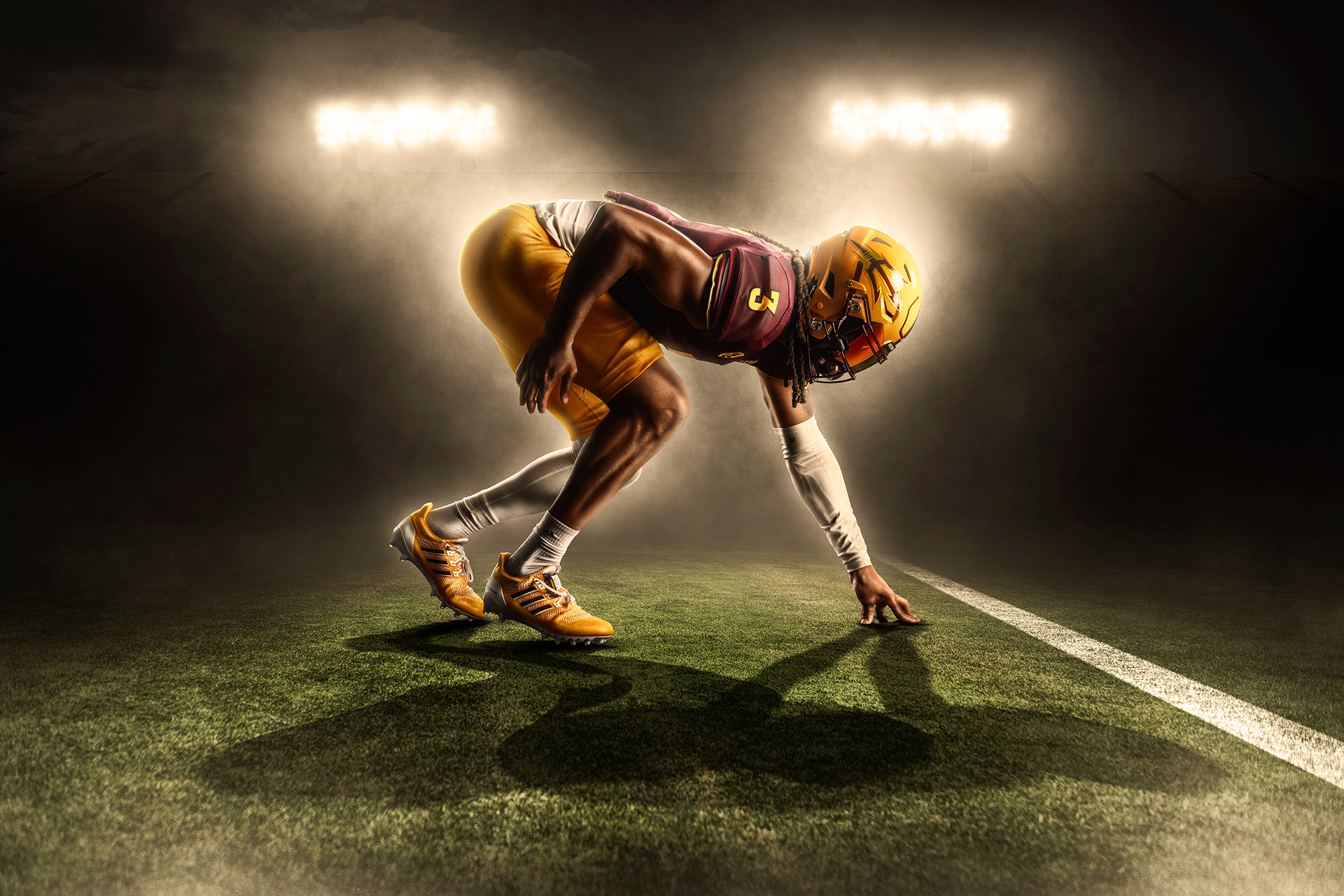
Moving forward, I anticipate that future football photo shoots, both professional and college, will benefit from modern uniforms and their unique designs. For larger campaigns, prop masters might find a can of glass spray useful for taming reflections on larger productions. I expect trends will evolve, with the anonymous, near-cyborg player look being popular for a time, before viewers yearn to see the eyes of the athletes they idolize from the stands again.
At that point, visors may fade out, and we’ll be looking back into the helmet. In the meantime, I look forward to the variety of color palettes that film and tints can create. I never imagined I would write an article revolving around a piece of plastic or polycarbonate, but life has a funny way of surprising us.
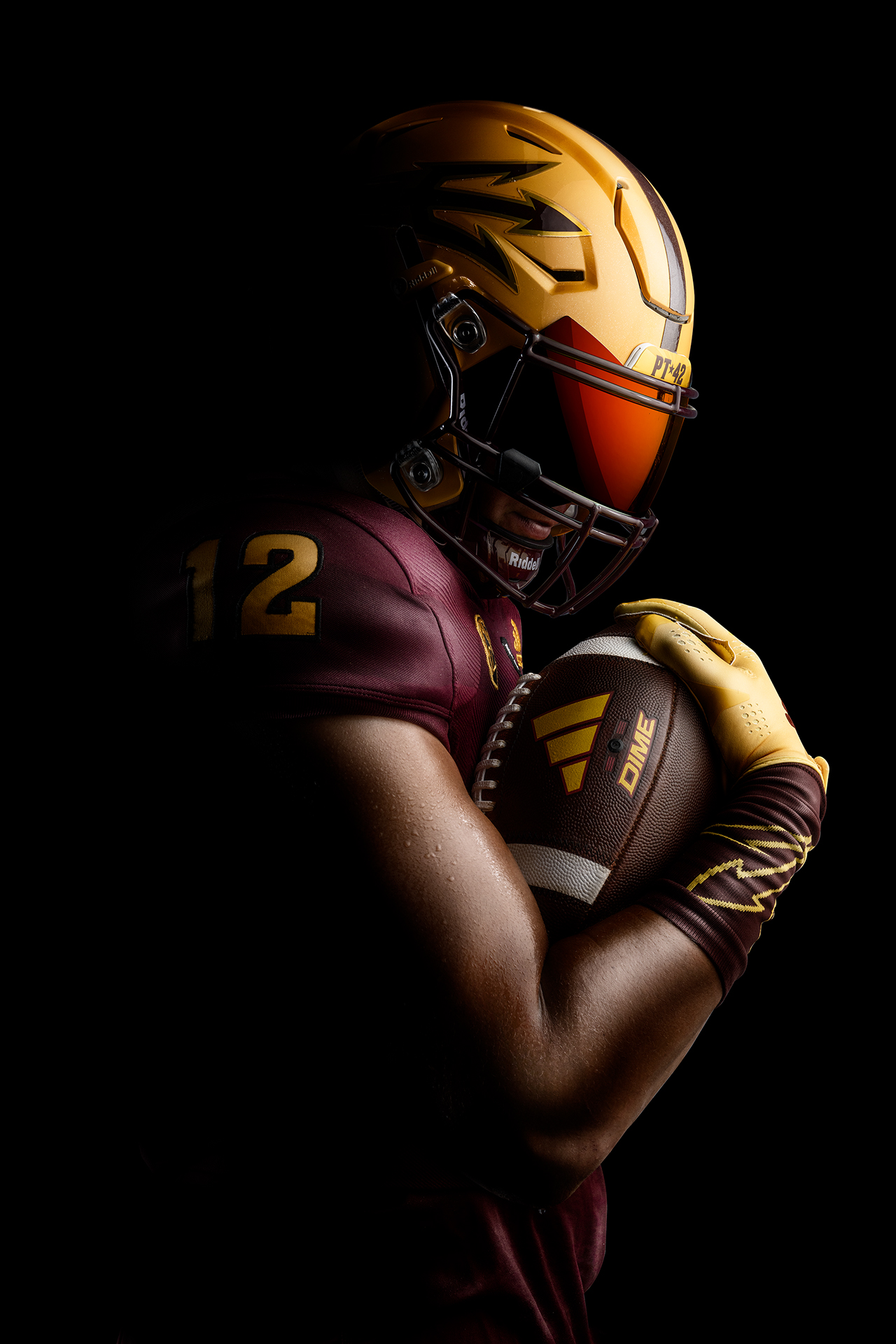
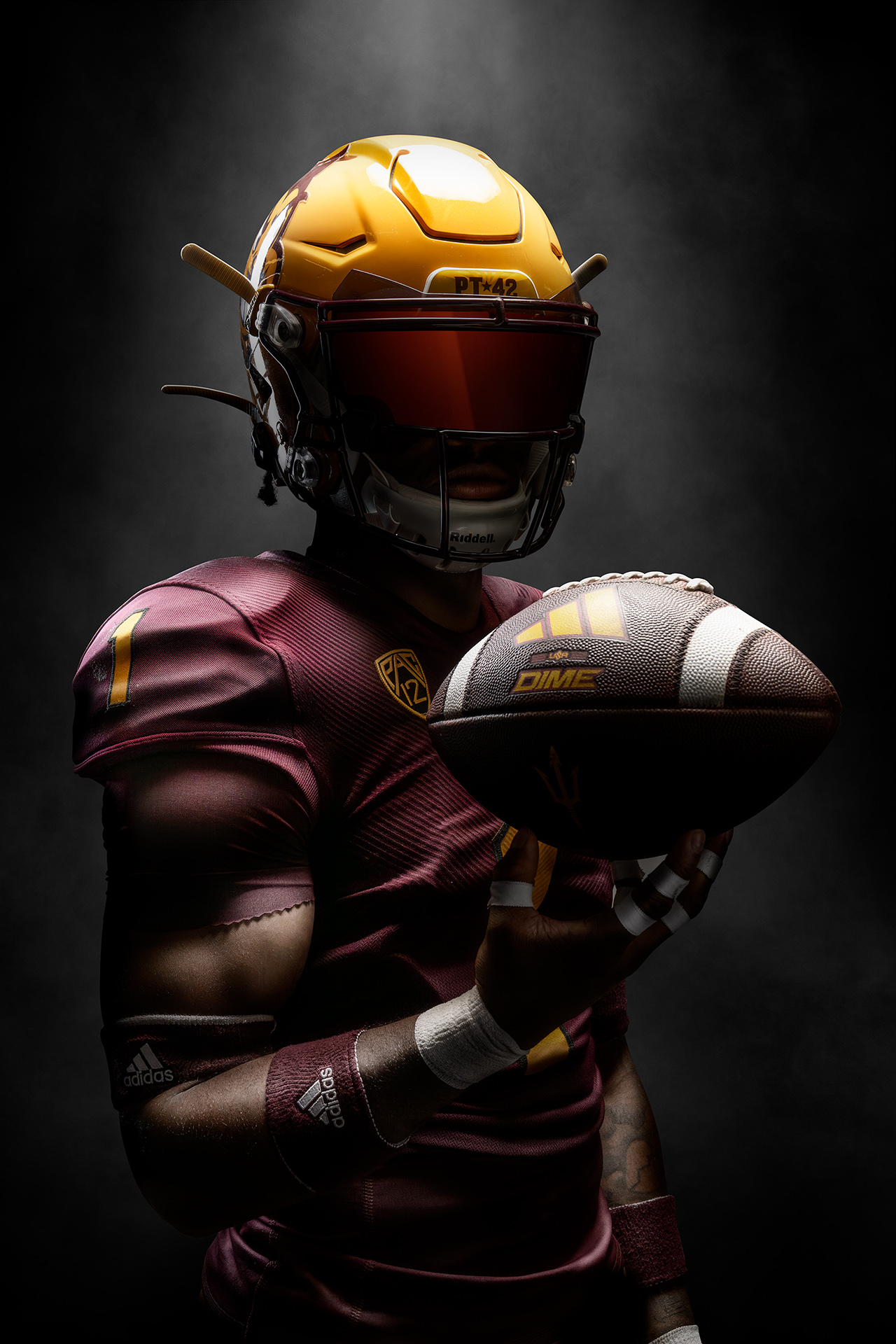

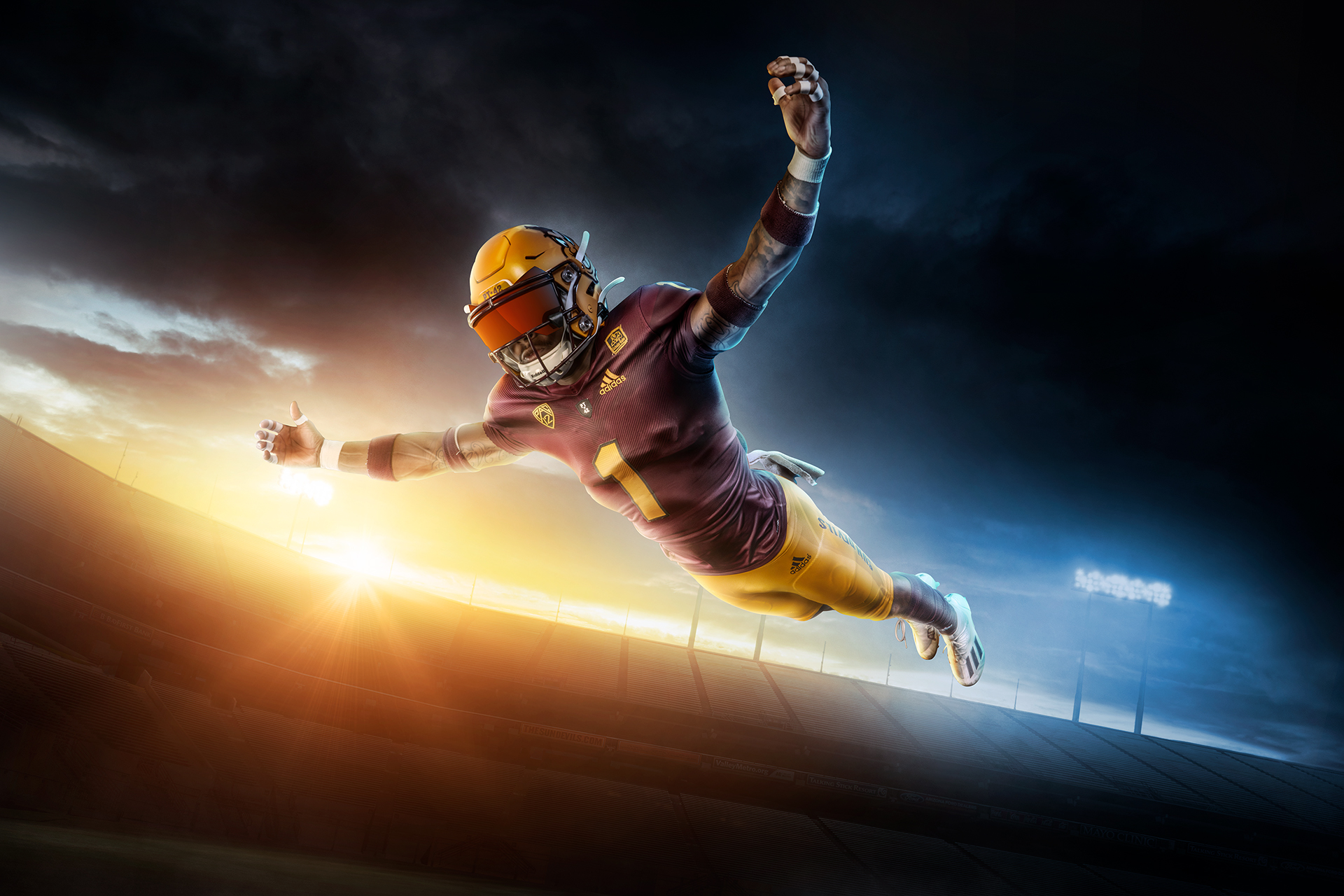
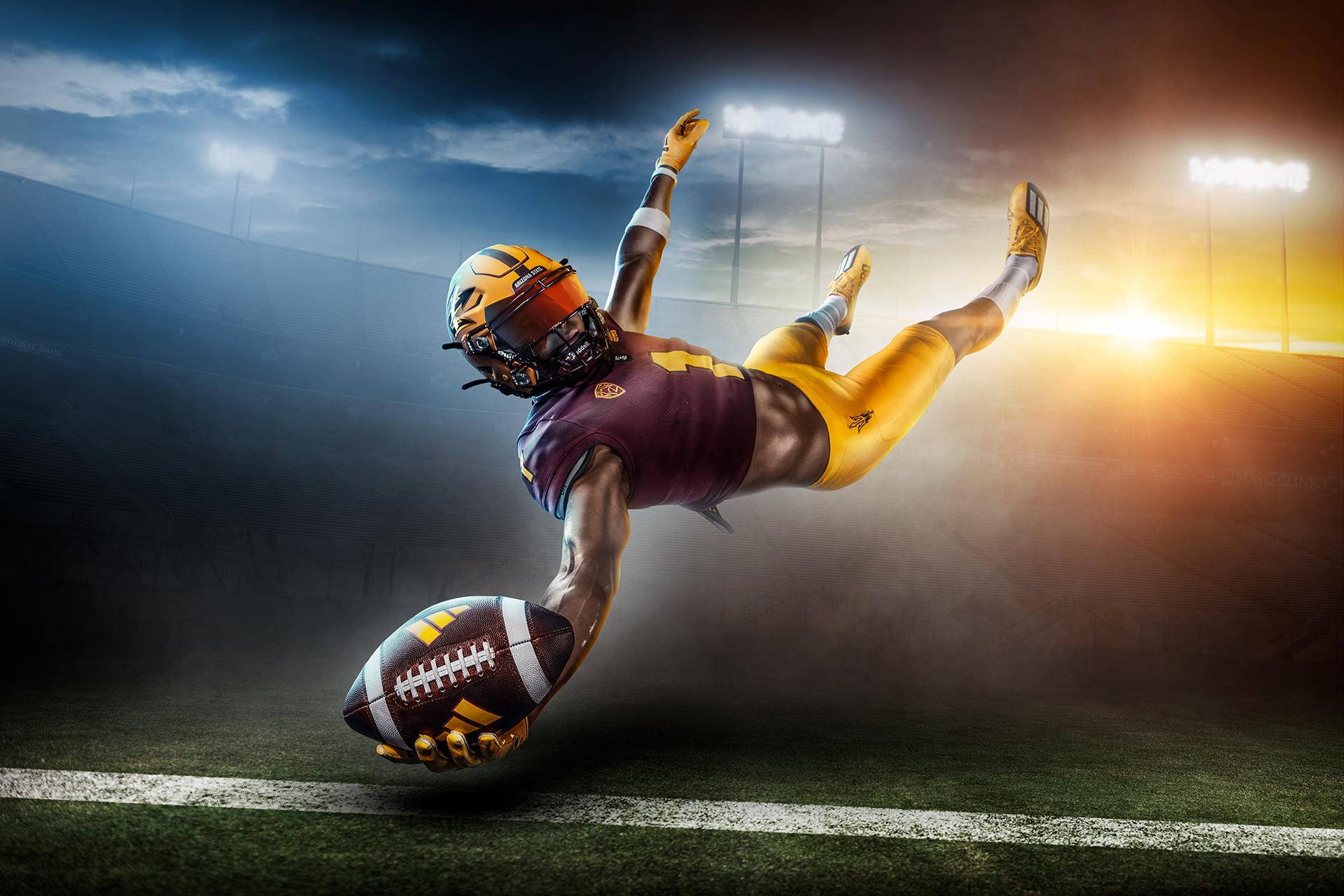
I have been following you for quite sometime and have admired your images of trains, I also enjoyed your work with the U2, I was an F4 pilot 50 years ago and saw them on various occasions. Do you discuss or have you shared any tips on your train images. Thanks sharing your work.